Yikes, it’s been a while. I haven’t been working on anything lately, which depresses me because it’s been almost a year since I started the Mansard Victorian’s bathroom… at this rate that house will be finished in 2040 or so! But I also need to finish posting about the dog vignette I made for Christmas and I just haven’t felt like it. To all of you who have been waiting with bated breath, sorry.
I finished the electricity on December 21. By this point it was pretty clear I wouldn’t have the roombox finished for Christmas, since Geoff was home again and I couldn’t get everything done that was left to get done while he was around. So I accepted it would have to be a post-Christmas gift.
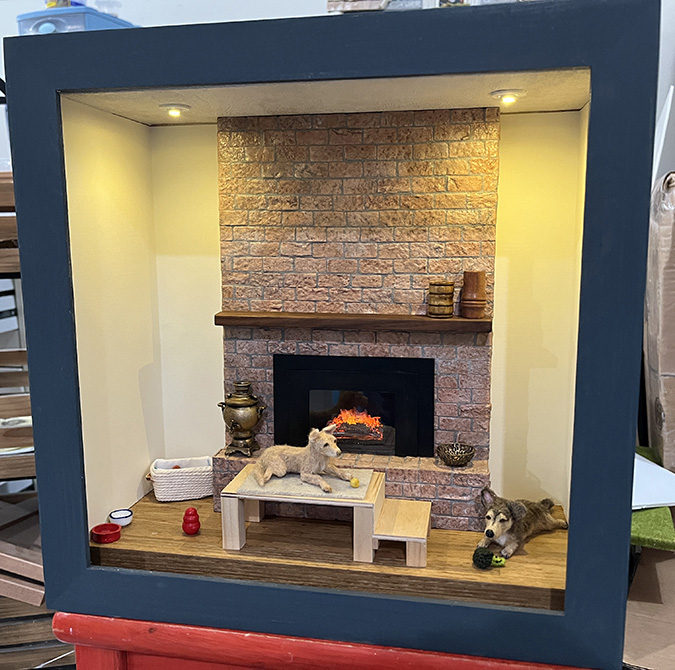
He left town again the day after Christmas which gave me a few days to get everything done before his return on the 29th. By the end I was really rushing and didn’t take good pictures, so apologies in advance for that.
I had purchased 1:12 baseboard and crown molding, but the baseboard was the kind that had a slot in it to hide a wire behind, and that didn’t look nice where you see the edge of the baseboard at the front of the roombox. I tried filling in the slot with wood filler but it looked bad. Also tried adding a return but it didn’t work out for reasons I can’t remember now (probably because I was in a hurry and got overly annoyed).
Luckily I had some 1:12 baseboard in my stash that didn’t have a slot in the back, and as an added bonus it was already painted.
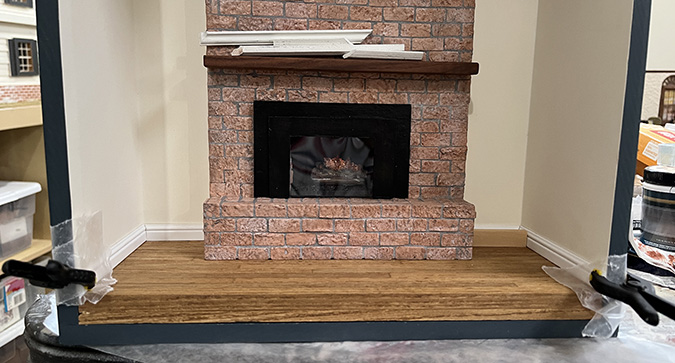
I think that spacer to the right of the fireplace was in there because the baseboard was warped, and the spacer pushed it flat. Don’t remember.
I did add a return on the exposed ends of the crown molding.
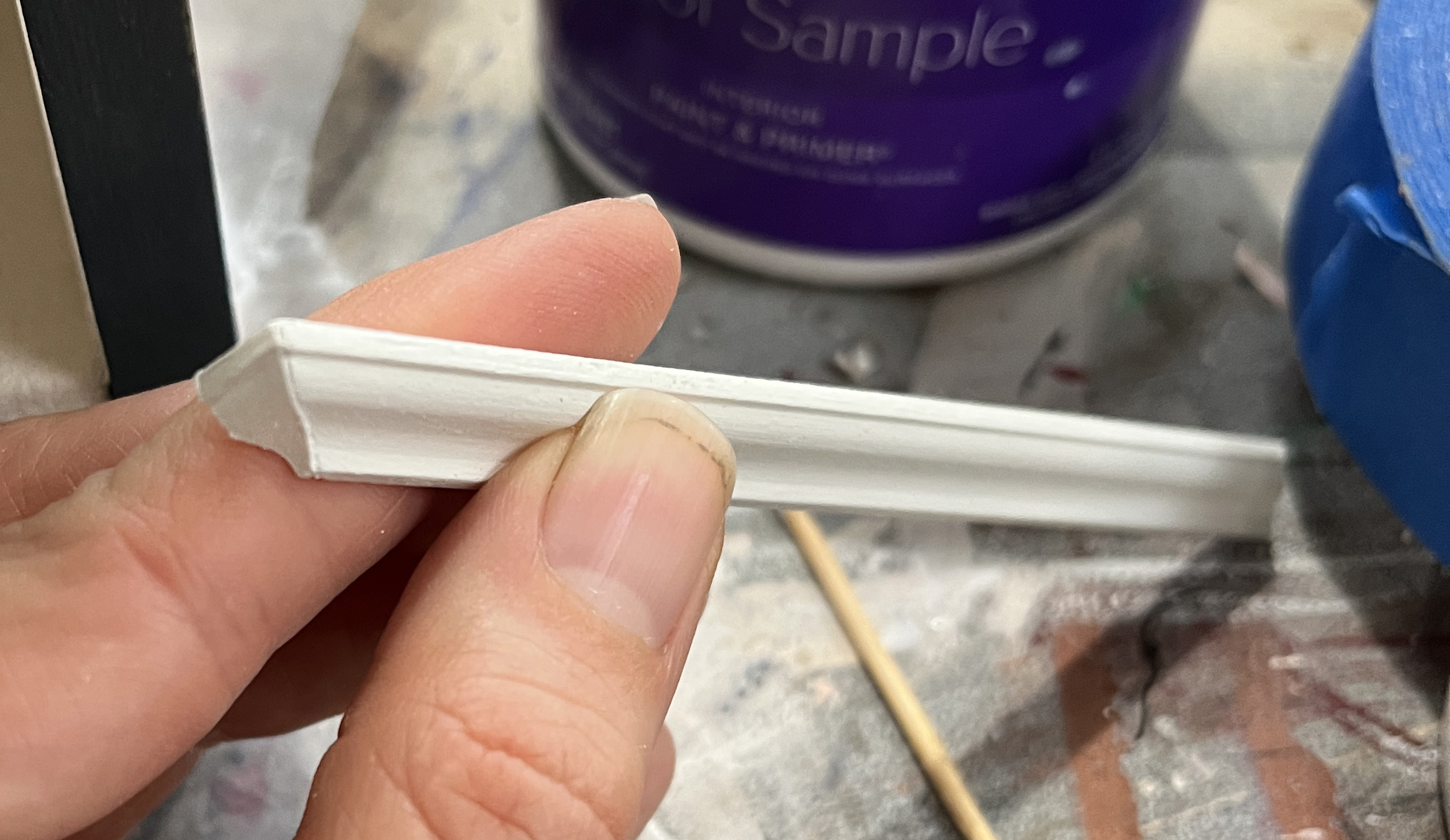
I turned the roombox upside-down to glue in the crown. One of the pieces was warped and I used tape to force it into place.
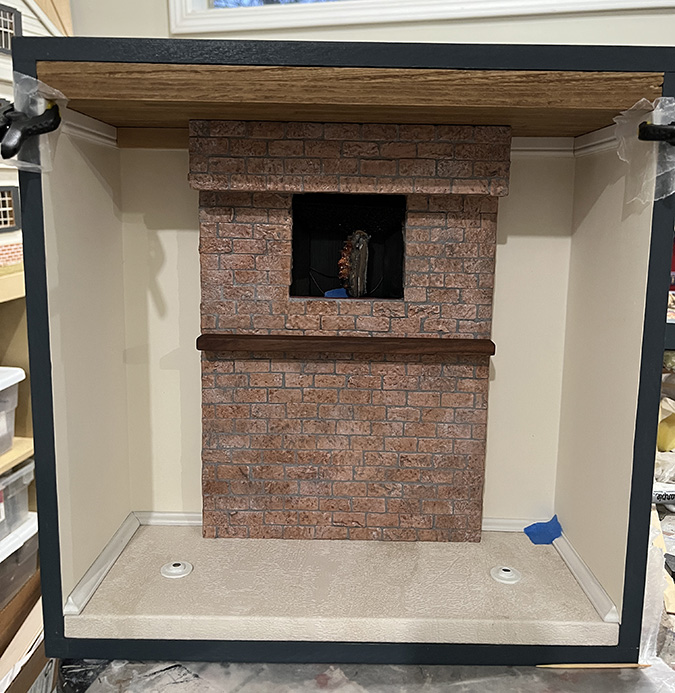
(I should mention that the ceiling and floor are not glued in. I left them removable so I can access the wiring, just in case the electricity stops working. See, I’ve learned from past mistakes!)
Normally I would fill the seams with wood filler and then paint over them. Since I was in a hurry, I used white grout instead.
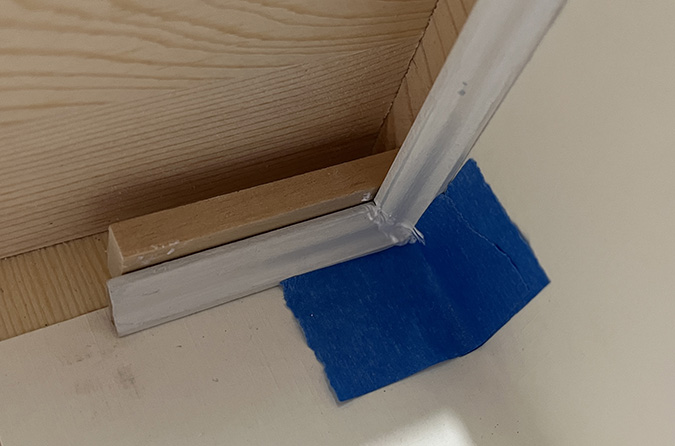
The piece of wood on top of the crown is preventing the underside of the trim from getting globs of grout on it.
While that was drying, I finished up the fireplace by gluing in the top and bottom pieces I’d prepared a few days earlier.
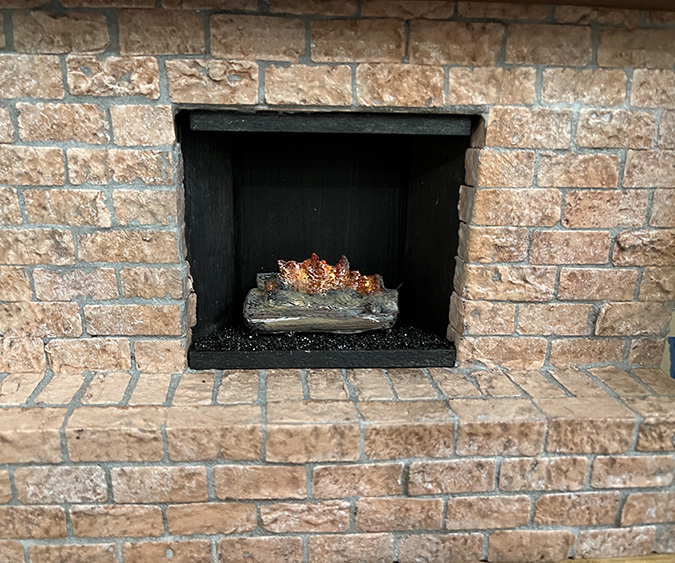
Then I added the front piece, using a spacer to make sure it’s centered. This is just held on with wax, so I can remove it and reach in to position the log.

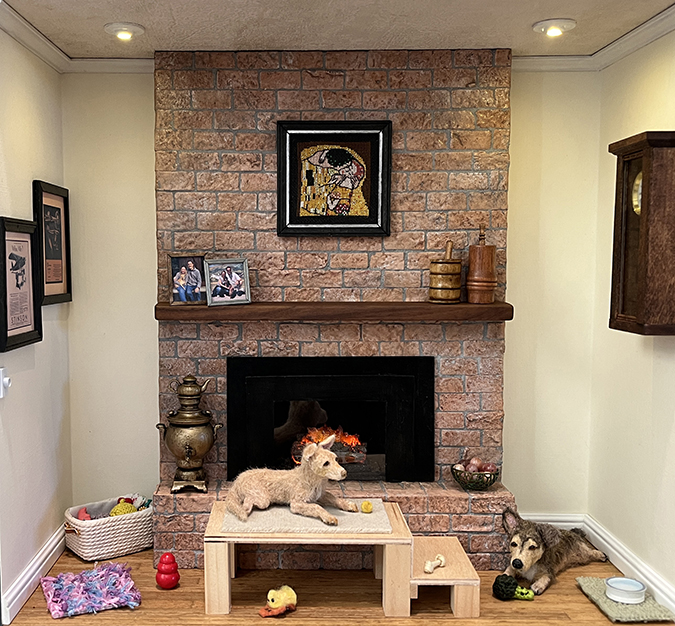
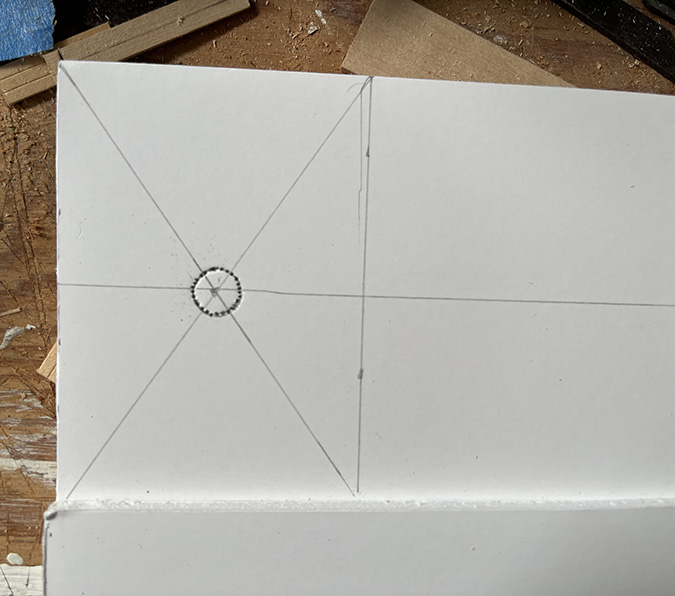
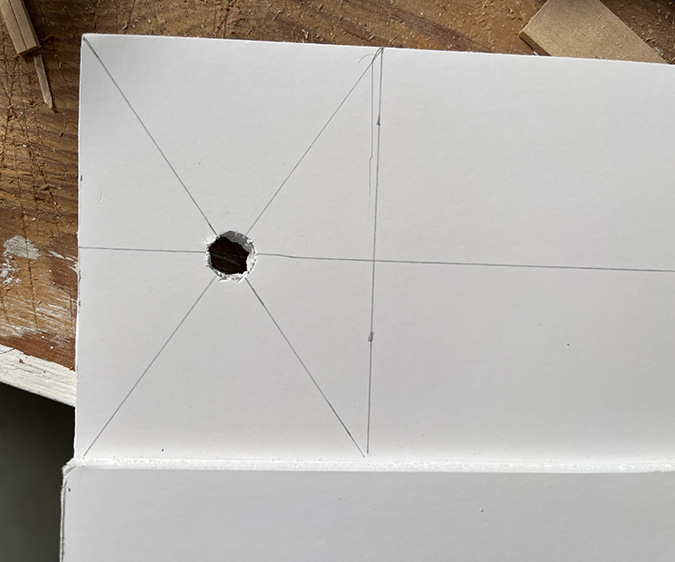
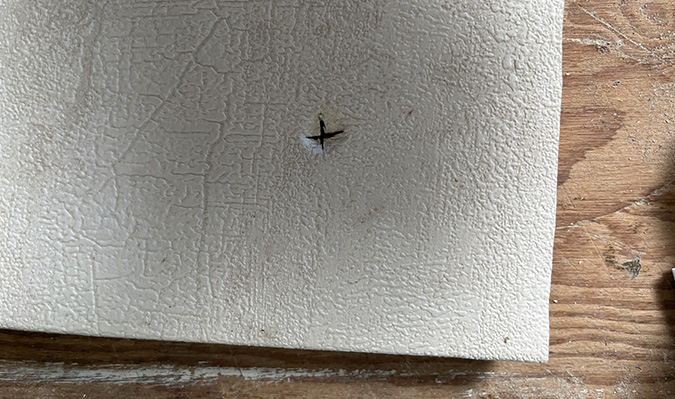
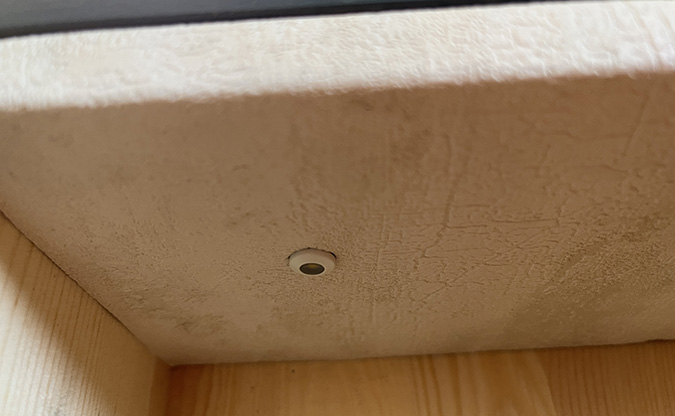
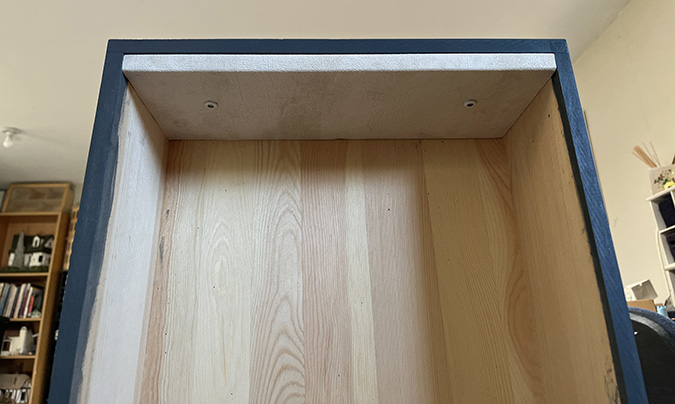
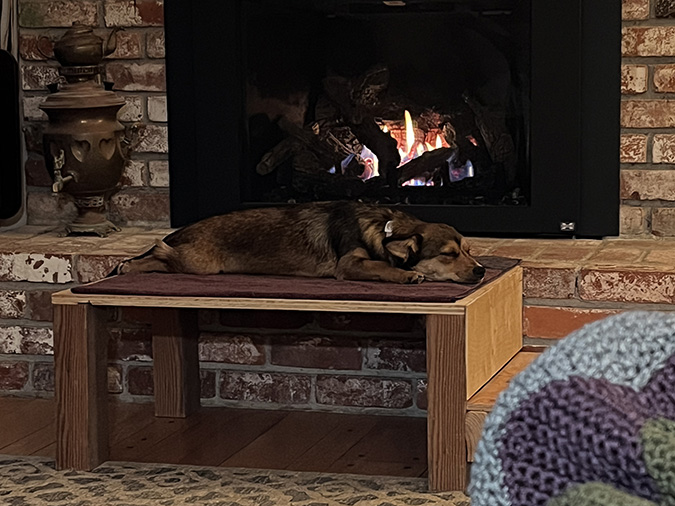
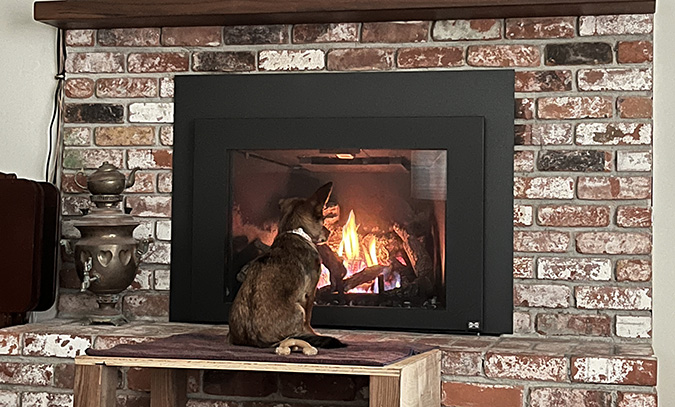
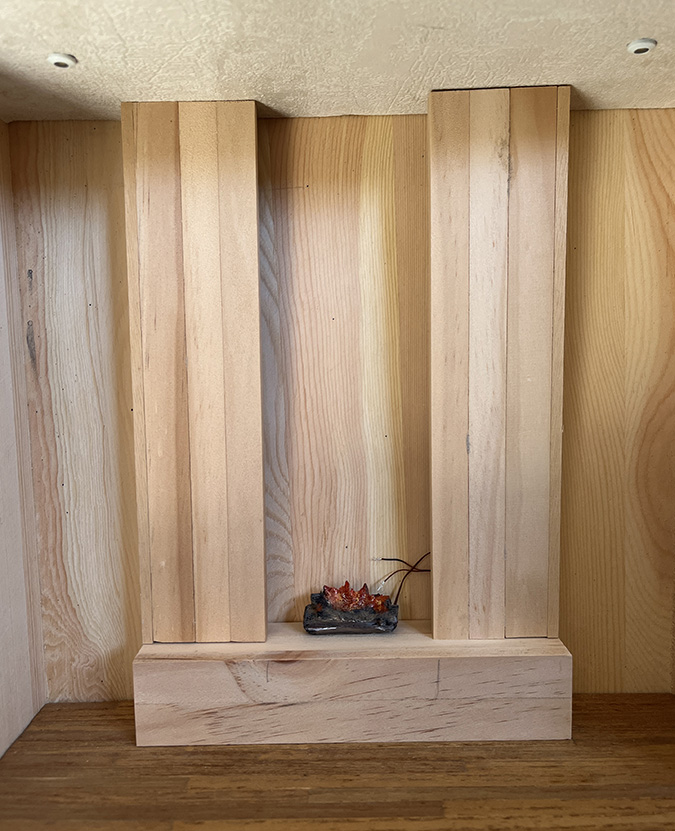

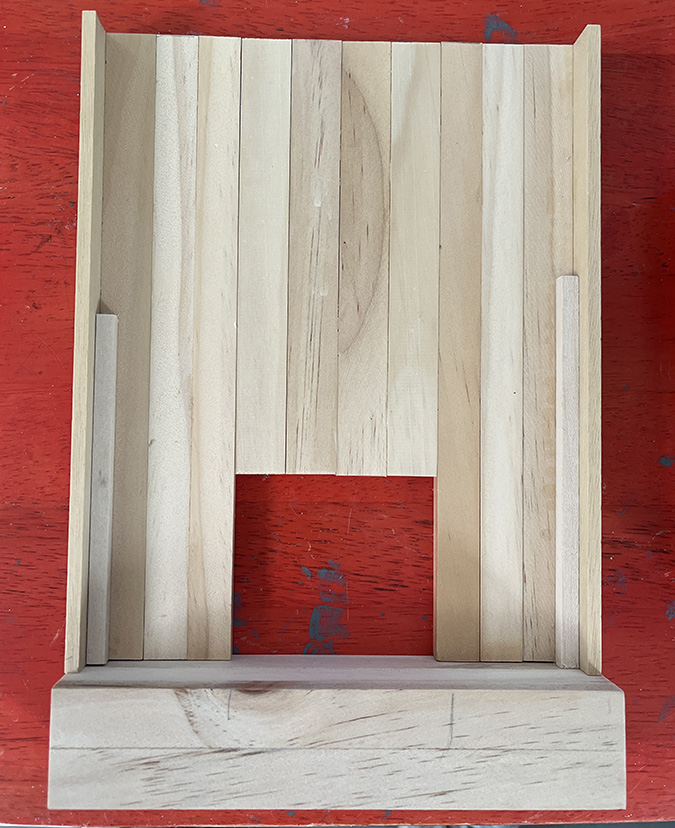
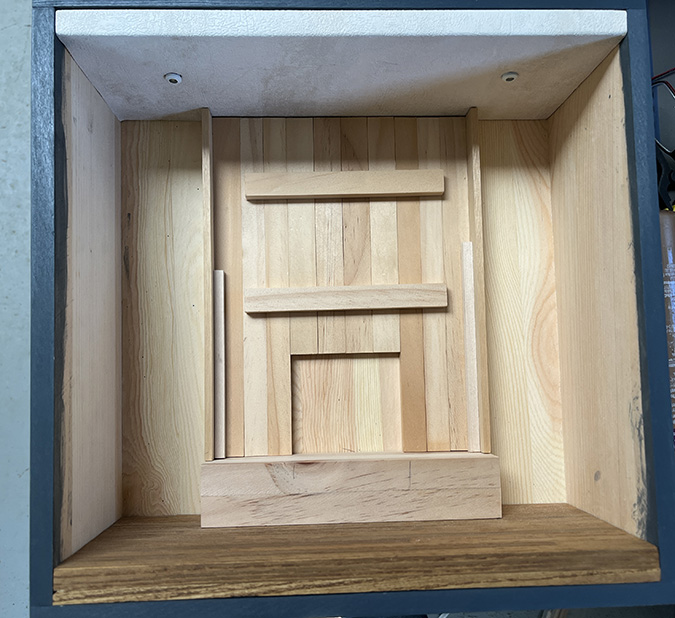
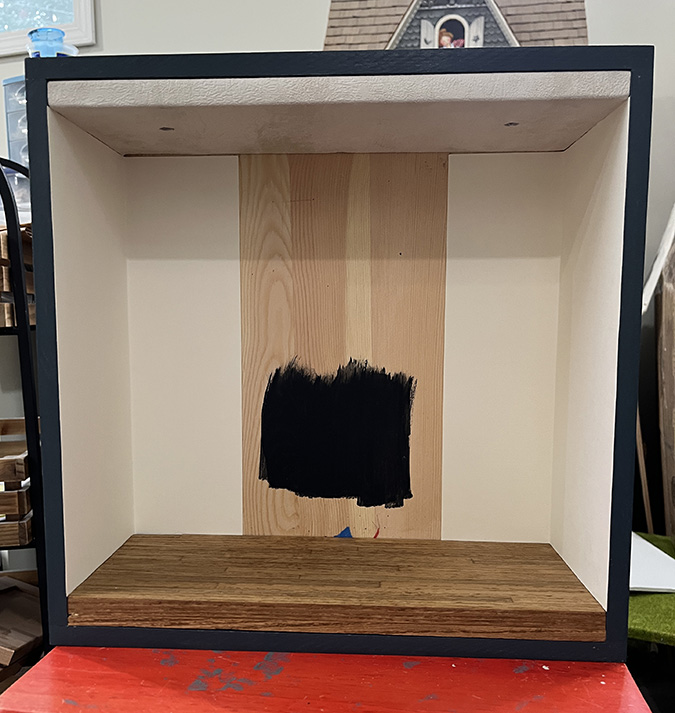
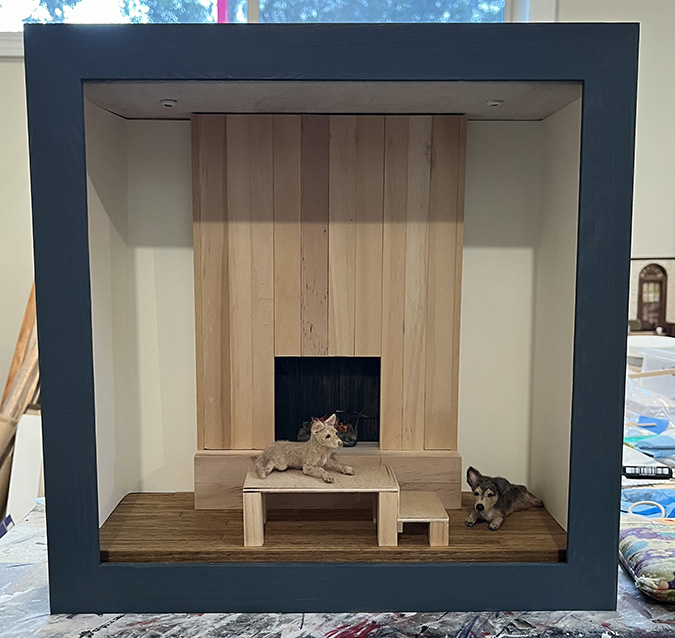
 Emily is a freelance writer, miniaturist, and adventure game enthusiast.
Emily is a freelance writer, miniaturist, and adventure game enthusiast.

